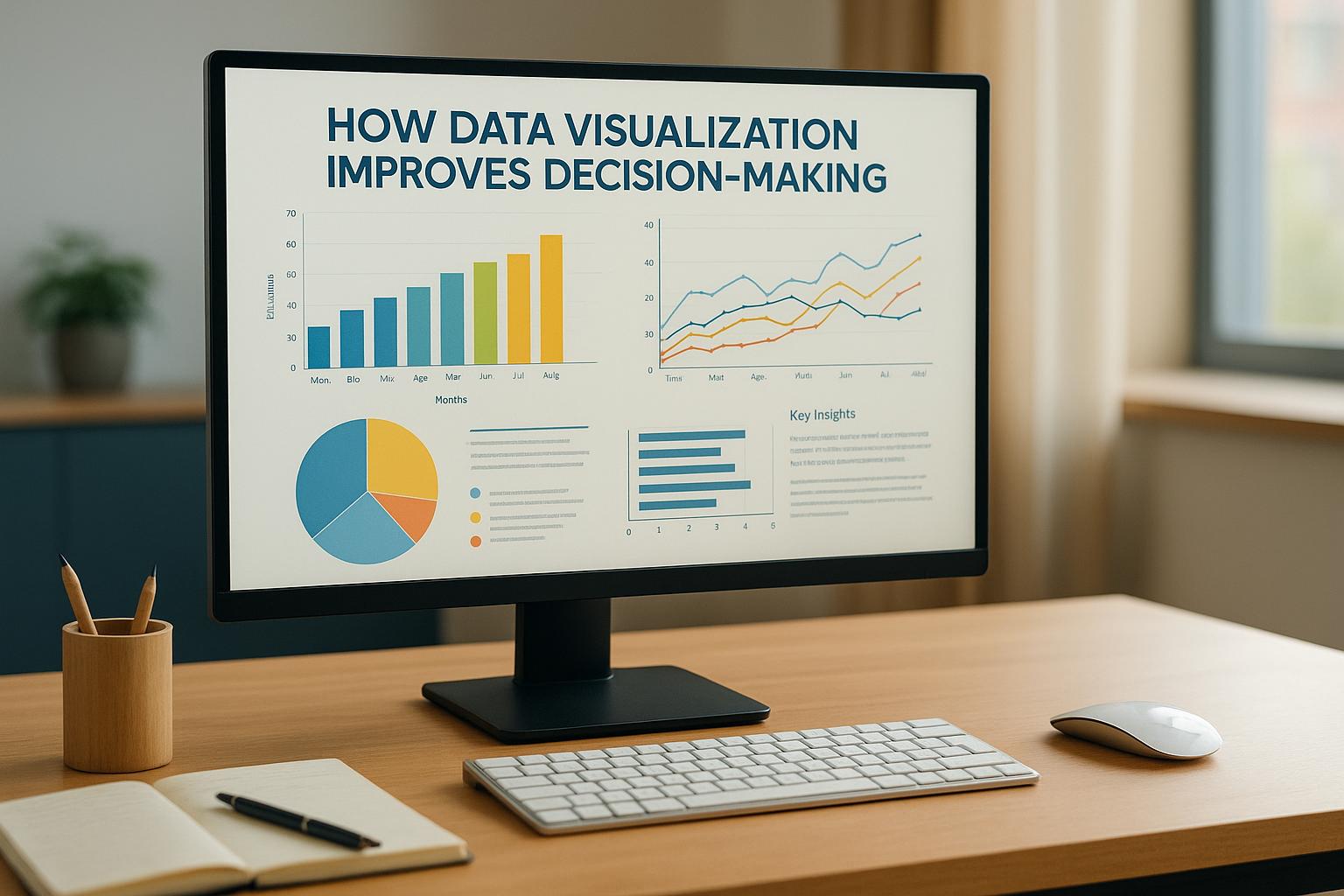Want to protect your digital content and boost revenue? Digital Rights Management (DRM) is the answer.
DRM helps you secure your content, reduce piracy, and implement flexible monetization strategies like subscriptions or pay-per-use models. Here's what you need to know:
- What DRM Does: Encrypts content, restricts access, and enforces licensing terms.
- Why It Matters: Prevents piracy, tracks usage, and supports compliance with copyright laws.
- How to Use It: Choose a DRM platform that works across devices, offers strong encryption, and supports scalable distribution.
- Revenue Models: Use DRM for subscription plans, rentals, and perpetual licenses.
With global digital piracy causing billions in losses, DRM is essential for protecting your content and ensuring long-term revenue growth. Let’s explore how to set it up effectively.
What is DRM? A Must-Know Guide for Content Creators & Businesses!
Selecting a DRM Platform
To safeguard revenue streams in the face of digital piracy - estimated to cause losses between $40 and $97.1 billion annually - choosing a strong DRM platform is essential. Beyond just protection, the right platform can enhance distribution and user experience.
Device and Platform Support
A DRM solution that works seamlessly across multiple devices and operating systems is key to reaching a broad audience. Here's what to look for:
| Platform Type | Required Features |
|---|---|
| Mobile | Native iOS/Android app support, offline playback capability |
| Desktop | Browser playback and download management |
| Smart TVs | HDR/4K support, HDCP compliance |
| Gaming Consoles | DRM protocols tailored to specific console requirements |
Content Decryption Modules (CDMs) are critical for ensuring compatibility across devices while safeguarding premium content with the appropriate security measures. Compatibility alone isn't enough - your DRM platform must also meet stringent security standards.
Security Requirements
The level of security your DRM platform provides should align with the value of your content and how it’s distributed. Key features to look for include:
- Encryption Standards: Use of industry-recognized protocols to secure content.
- Access Controls: Dynamic permissions that adapt based on user behavior and location.
- Monitoring Tools: Real-time analytics to identify and address security vulnerabilities.
To further strengthen protection, consider using unique encryption keys for different content quality levels. For instance, separate keys for standard definition, high definition, and ultra-high definition content allow for more precise access control. Additionally, evaluate the platform's ability to scale, comply with regulations, and deliver content dynamically.
Distribution Capacity
With digital video viewership now exceeding 3.1 billion users, scalability is a must. A robust DRM platform should include:
- Cloud Infrastructure: Cloud-based resources that can scale dynamically to handle spikes in demand without compromising performance.
- Multi-DRM Support: Compatibility with multiple DRM technologies to ensure consistent content protection across various devices and regions.
- Analytics Integration: Tools to monitor delivery performance and detect security threats.
Entry-level DRM services typically start at $500 per month, with costs varying based on features and scale. Look for platforms offering flexible pricing that aligns with your growth needs. The ideal DRM solution balances strong security, ease of use, and flexibility, ensuring effective content protection while delivering a smooth user experience to support long-term revenue growth.
Setting Up DRM Protection
Once you've chosen a DRM platform, the next step is to configure it properly. This setup is crucial for ensuring both the security of your content and the protection of your revenue. The process involves fine-tuning security settings, setting up the license server, and implementing playback controls.
Content Security Setup
DRM systems rely on a combination of AES-128 encryption and forensic watermarking to provide multiple layers of protection:
| Security Layer | Implementation | Purpose |
|---|---|---|
| Encryption | AES-128 | Scrambles content |
| Watermarking | Forensic | Tracks content leaks |
| Access Control | Token-based | Authenticates users |
A great example of robust content security is the Academy of Motion Picture Arts and Sciences. In 2024, they used Brightcove’s forensic watermarking to protect exclusive content during awards season, ensuring their media stayed secure.
Once your content is secured, the next step is configuring the license server to manage access effectively.
License Server Configuration
The license server is a critical component of DRM. To secure it, focus on these key areas:
- HTTPS Endpoints: Use token-based authentication and rotate encryption keys regularly.
- Geo-blocking and IP Filtering: Restrict access based on location or specific IP addresses.
- Key Distribution: Ensure secure delivery of encryption keys using HTTPS with dynamic key rotation.
Once the license server is configured, turn your attention to playback controls to safeguard content during use.
Playback Controls
Playback controls add another layer of security while maintaining a smooth user experience. Key measures include:
- Device Limitations: Set limits on simultaneous streams to prevent account sharing.
- Quality Controls: Adjust delivery rules to fit different platforms and devices.
- Output Protection: Enable HDCP compliance to protect high-value content from unauthorized copying.
"DRM provides a comprehensive framework for protecting digital assets and sensitive content." – Kiteworks
For large-scale deployments, consulting IT specialists can help you fine-tune your DRM setup for optimal performance and security. Resources like the Top Consulting Firms Directory can connect you with professionals who specialize in content protection and monetization strategies.
Finally, to keep your system secure over time, regularly monitor usage patterns and update DRM policies to counter new threats.
sbb-itb-97f6a47
DRM Business Models
Successful DRM strategies seamlessly integrate security measures with revenue-focused approaches. With streaming experiencing a 21% surge in growth during 2021, the importance of effective monetization tools has never been clearer.
Subscription Management
Subscription-based models rely on tiered access to cater to varying customer needs while maximizing revenue. Here's a snapshot of typical subscription tiers:
| Tier Level | Access Rights | Common Features |
|---|---|---|
| Basic | Limited content library | Single-device streaming |
| Premium | Full content library | Multi-device access |
| Enterprise | Custom content packages | Advanced analytics |
A great example of this approach is Globoplay, which adopted EZDRM's Universal Complete DRMaaS in August 2024. This system manages content access for over 22 million monthly subscribers, ensuring both user satisfaction and strict security. Beyond subscriptions, DRM also plays a crucial role in enabling rental-based models.
Rental System Setup
For time-limited access, DRM configurations must strike a balance between user convenience and content protection. Key steps in setting up an effective rental system include:
- License Duration: Define specific timeframes for content availability.
- Offline Access: Set permissions for downloads, ensuring controlled access.
- Payment Integration: Link payment systems to activate licenses seamlessly.
"DRM encompasses the technologies that control access to digital content and define usage permissions...Enabling Subscription and Rental Models: Control time-based access for subscription or rental offerings." - Wowza Media Systems
France Télévisions applied this model effectively through NAGRAVISION's DRM services in September 2024, managing time-restricted access for the French Open and Paris 2024 Summer Olympics. For content requiring indefinite access, permanent licensing offers a tailored solution.
Permanent License Management
Permanent licenses are designed for ongoing access, requiring robust authentication systems and adaptable configurations. Microsoft's PlayReady 4.6, launched in December 2022, highlights several advanced features:
| Feature | Business Benefit |
|---|---|
| Cross-device Authentication | Ensures a seamless user experience |
| Remote Access Revocation | Strengthens security control |
| Usage Analytics | Supports data-driven decisions |
For large-scale or enterprise-level implementations, consulting experts - such as those listed in the Top Consulting Firms Directory - can help fine-tune these configurations. Effective DRM measures are critical, especially when digital piracy is estimated to cost over $200 billion globally. Verimatrix's collaboration with Antena TV Group in September 2024 highlights how advanced DRM solutions can enhance both content security and user satisfaction.
Legal Requirements and User Access
Regulatory Standards
In the U.S., the Digital Millennium Copyright Act (DMCA) serves as the backbone for regulating Digital Rights Management (DRM). It establishes specific rules for protecting content and ensuring proper monetization. Here’s a quick breakdown of its key requirements:
| DMCA Compliance Requirements | Implementation Guidelines |
|---|---|
| Anti-circumvention Measures | Use strong technical protection systems to prevent unauthorized access |
| Notice-and-takedown Process | Set up efficient procedures for removing infringing content |
| Safe Harbor Provisions | Enforce policies for addressing repeat offenders |
| Security Research Allowances | Create controlled environments for testing security systems |
Under Section 1201 of the DMCA, bypassing access controls is strictly prohibited. This was affirmed in the Universal City Studios, Inc. v. Reimerdes case, where the court upheld the legality of DRM protection measures. Beyond meeting these legal standards, DRM systems must also prioritize ease of use to ensure accessibility.
User Experience Design
One of the biggest challenges with DRM is finding the right balance between adhering to legal standards and maintaining a smooth, user-friendly experience. Effective DRM systems combine robust security with intuitive design to safeguard assets while minimizing user frustration. This can be achieved by integrating advanced security measures with seamless access controls.
| User Experience Element | Implementation Strategy | Business Impact |
|---|---|---|
| Adaptive Security | Adjust protection levels based on user behavior and context | Makes access easier for legitimate users |
| Authentication Flow | Incorporate biometrics and Single Sign-On (SSO) | Speeds up user access |
| Error Handling | Provide clear error messages with actionable support instructions | Reduces customer service requests |
| Offline Access | Use secure caching to enable limited offline content access | Improves overall user satisfaction |
Here are some key points to consider for a more user-friendly DRM experience:
- Streamlined Authentication: Use multi-factor authentication methods that don’t inconvenience users.
- Transparent Usage Rights: Clearly communicate what users can and cannot do with the content.
- Error Resolution Support: Offer fast and effective solutions when access issues arise.
- Accessibility: Ensure the system works with assistive technologies to meet accessibility standards.
For large-scale implementations, working with experts can make a big difference. Resources like the Top Consulting Firms Directory can connect organizations with specialists who design DRM systems that are both compliant and user-friendly. Additionally, it’s crucial to regularly update DRM policies to keep pace with new technologies and evolving user expectations.
Conclusion: DRM Revenue Strategies
Crafting effective DRM strategies is essential for maximizing content monetization while safeguarding revenue streams. In 2024 alone, OTT and pay TV platforms incurred an estimated $12.5 billion in losses due to copyright infringement and unauthorized sharing.
"DRM encompasses the technologies and systems that manage access to digital content according to predefined rules, enabling secure distribution while preventing unauthorized copying or sharing." – Jeff Reese, Product Manager at Wowza Media Systems
Key Revenue Strategies and Their Impact
| Revenue Strategy | Implementation Approach | Business Impact |
|---|---|---|
| Tiered Access | Dynamic, tiered licensing | Supports premium pricing for exclusive content |
| Geographic Distribution | Regional release windows | Maximizes market-specific revenue opportunities |
| Preview Model | Limited access with upsell paths | Drives higher conversion rates |
| Device Management | Flexible authentication limits | Balances security with a seamless user experience |
These strategies highlight the importance of blending technology, user experience, and security updates to create sustainable revenue models. To achieve this, businesses should prioritize three main areas:
- Seamless DRM Integration: Opt for platforms offering multi-DRM support to streamline implementation.
- Enhanced User Experience: Reduce authentication delays through features like pre-fetching and persistent licenses.
- Proactive Security Updates: Regularly update protocols to address emerging threats while maintaining operational efficiency.
For businesses looking to refine their DRM strategies, consulting experts can make a significant difference. The Top Consulting Firms Directory serves as a valuable resource, connecting companies with specialists who can bridge the gap between technical DRM setup and revenue optimization.
"DRM is vital for organizations because it enables them to control access to their copyrighted digital assets...managing how the public uses its content, tracking those who have viewed it, and preventing piracy and unauthorized use." – Digital Guardian
With the global DRM market reaching $5.147 billion in 2023, it’s clear that secure and user-friendly DRM solutions are not just about protection - they’re a cornerstone of long-term revenue growth. By focusing on technology integration, user-friendly design, and strong security measures, businesses can confidently navigate the challenges of digital content distribution.
FAQs
What should I consider when selecting a DRM platform for different devices and content types?
When choosing a Digital Rights Management (DRM) platform, it's important to focus on a few critical factors to ensure it aligns with your goals. Start with device compatibility - the platform should work seamlessly across a variety of devices like smartphones, tablets, and computers. This ensures your content is accessible to a broader audience.
Next, look into the platform's security features. Tools like encryption and user authentication are key to safeguarding your content from unauthorized access. It's also worth checking how easily the solution can integrate with your current systems and workflows. A smooth integration can save you time and prevent unnecessary complications during setup.
Lastly, think about the cost. Make sure the platform fits within your budget while meeting the demands of your content distribution. By carefully weighing these factors, you can select a DRM solution that protects your content and provides a hassle-free experience for your users.
How can businesses ensure strong DRM security without compromising the user experience?
To achieve a balance between strong DRM security and an easy-to-navigate user experience, businesses need to emphasize flexibility and openness. Modern DRM systems that function effortlessly across various devices can secure content while making it accessible for legitimate users. At the same time, robust encryption and clear access controls help protect digital assets without causing unnecessary frustration.
It's also important to keep users informed. Explaining the purpose of DRM and being upfront about how their data is managed can go a long way in building trust. Regular updates to DRM systems are crucial as well, ensuring they stay ahead of potential threats without adding hurdles for users. By focusing on both security and usability, businesses can protect their content and keep users engaged.
What are the best practices for monetizing digital content with DRM through subscriptions or rentals?
To make money from digital content using DRM through models like subscriptions or rentals, the first step is choosing a dependable DRM solution that aligns with your content type and audience needs. It’s important to ensure the solution provides strong security features and works smoothly across different platforms, so users enjoy a hassle-free experience.
Be transparent about your licensing terms to avoid confusing your customers and to build trust. Regular updates to your DRM system are essential to tackle emerging security threats. At the same time, introducing fair usage policies can help strike a balance between protecting your content and keeping it accessible to users. This strategy not only safeguards your intellectual property but also helps boost revenue by ensuring your content is distributed securely and under control.


